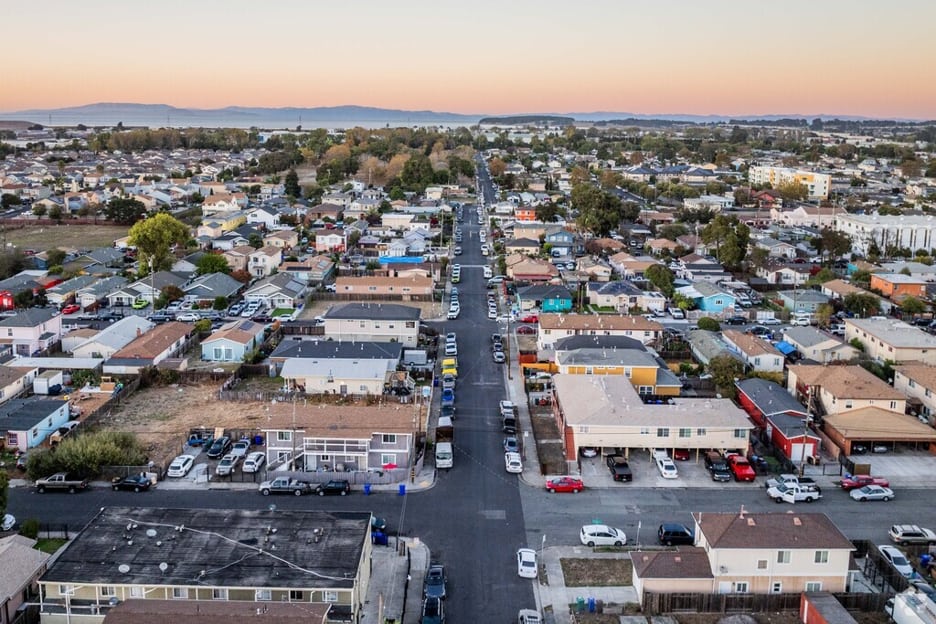What Every Developer Should Know About Planning Permission in Richmond North Twickenham
Navigating the complexities of planning permission in Richmond’s North Twickenham is a crucial step for homeowners and developers looking to undertake construction or renovation projects in this vibrant area of southwest London. Richmond and Twickenham are known for their charming architecture, leafy streets, and proximity to central London, making them highly desirable places to live and work. However, with this desirability comes a rigorous process for securing planning permission that aligns with local regulations and the broader goals of preserving the area’s historic character and natural beauty.
In this comprehensive guide, we will explore everything you need to know about planning permission in Richmond North Twickenham, from understanding the regulations to applying for permission, to successfully completing your construction or renovation project.
1. Understanding the Importance of Planning Permission
Before embarking on any building or renovation project, it is vital to understand the importance of planning permission. This is a legal requirement designed to ensure that proposed changes to the environment or property are in line with local development goals, regulations, and aesthetic considerations.
Planning permission is typically required for:
- New buildings: Any new construction, whether residential, commercial, or mixed-use.
- Extensions or modifications: Adding extra space to your property, including side extensions, rear extensions, or loft conversions.
- Alterations: Significant changes to the external appearance of a building, including window changes, facade alterations, or roof modifications.
- Change of use: Converting a property or land from one use to another (e.g., changing a commercial property into residential use).
In Richmond North Twickenham, planning permission is essential for maintaining the visual harmony of the area and preserving the character of the diverse properties that make up the local landscape. Whether you are building a new home, adding an extension, or converting a property, failing to obtain the necessary planning permission can result in costly fines, removal of unauthorized work, or even legal action.
2. Richmond North Twickenham: Local Planning Policies and Considerations
Richmond North Twickenham is part of the London Borough of Richmond upon Thames, an area that is home to a variety of architectural styles, from Georgian and Victorian terraced houses to more modern developments. The borough has specific policies in place to maintain the character of these areas while supporting sustainable growth and development.
Some key planning policies to consider when applying for planning permission in Richmond North Twickenham include:
- Conservation Areas: Richmond North Twickenham includes several conservation areas where strict planning controls are applied to protect the area’s historic and architectural integrity. Any developments or changes to properties in these areas are subject to additional scrutiny and may require permission for works that would typically not require approval elsewhere. It is essential to check whether your property falls within one of these designated areas before beginning any work.
- Listed Buildings: If your property is a listed building, meaning it has been recognized for its historical or architectural significance, then any alterations, extensions, or changes to the building’s appearance will require listed building consent in addition to planning permission.
- Green Belt and Open Spaces: Some parts of Richmond North Twickenham lie within the Metropolitan Green Belt or designated open spaces. These areas have special protection to prevent urban sprawl and the loss of green space. Planning applications in these areas are often subject to stricter controls, particularly if your proposal involves significant alterations to land use.
- Sustainability and Environmental Impact: London’s planning policies emphasize sustainability, including energy efficiency, carbon emissions, and the use of renewable materials. Developers in Richmond North Twickenham are encouraged to consider the environmental impact of their projects and comply with policies that aim to reduce energy consumption and increase the use of green technology.
3. The Planning Application Process in Richmond North Twickenham
The process of applying for planning permission in Richmond North Twickenham can be broken down into several key steps. Understanding these steps will help ensure that your application is complete, compliant, and has the best chance of success.
Step 1: Preliminary Research and Consultation
Before submitting your planning application, it’s essential to conduct thorough research. This includes:
- Checking the local development plan: Familiarize yourself with the Richmond upon Thames Local Plan and other planning policies that may affect your proposal.
- Consulting with the local planning authority: It’s advisable to engage with Richmond Council’s planning department early in the process. You can discuss your proposal informally to get an idea of whether your project is likely to be approved, as well as to ensure that your plans comply with local regulations.
- Pre-application advice: Richmond Council offers pre-application advice services where planning officers provide feedback on your plans. This can be especially helpful for large or complex projects.
Step 2: Preparing the Planning Application
The next step is to prepare your planning application. This includes:
- Completion of the application form: You will need to fill out the official planning application form, which requires details about the site, the proposed development, and its impact.
- Supporting documents: You will need to submit various documents, including drawings of the existing and proposed site, a design and access statement, and an environmental impact assessment (if applicable). These documents should clearly demonstrate how your proposal meets local planning policies.
- Consulting with stakeholders: In some cases, you may need to consult with local residents, businesses, or other stakeholders to gather feedback on your proposal. This is especially common for large developments or changes in areas with a high concentration of heritage buildings.
Step 3: Submission and Review
Once your application is ready, it is submitted to Richmond Council for review. The council will assess your application against local policies, any potential impacts on the surrounding environment, and any feedback received from stakeholders. The review process typically takes 8 to 13 weeks, depending on the complexity of your application.
Step 4: Decision and Appeal
After reviewing your application, Richmond Council will issue a decision. You will receive one of the following outcomes:
- Approval: If your application is approved, you can begin your project in line with the conditions set by the council.
- Refusal: If your application is refused, you can appeal the decision to the Planning Inspectorate.
- Conditional approval: In some cases, your application may be approved subject to certain conditions, such as changes to the design or additional environmental measures.
4. Tips for a Successful Planning Application
To increase the likelihood of your planning application being approved, consider the following tips:
- Work with professionals: Engage architects, planners, and surveyors who are experienced with local planning policies and procedures. Their expertise can significantly improve the quality of your application.
- Understand local sensitivities: Be mindful of the unique character of Richmond North Twickenham and consider how your project may impact the local community, environment, and heritage.
- Be transparent: Provide clear and thorough documentation to support your application. Transparency will help the planning officers make an informed decision.
- Be prepared for revisions: It’s not uncommon for planning applications to be revised after feedback from the council or local residents. Be prepared to make necessary adjustments to your plans.
5. Conclusion
Securing planning permission in Richmond North Twickenham is a process that requires careful attention to detail, an understanding of local regulations, and a clear strategy for navigating the planning system. By conducting thorough research, engaging with the local planning authority, and preparing a comprehensive application, homeowners and developers can ensure that their projects align with the area’s development goals and policies.
Whether you’re adding an extension to your home, building a new property, or altering an existing structure, following the proper steps and adhering to local regulations will help you achieve your goals and contribute to the continued charm and growth of Richmond North Twickenham.



No responses yet